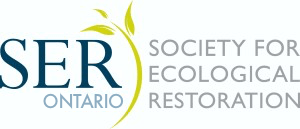2016 SERO AGM: Urban Waterfront Restoration
September 30 & October 1, 2016
Black Creek Pioneer Village, Toronto
Downloads:
-
AGM Abstracts and Presenter Booklet
-
AGM Synoposis
-
Presentation – John Hall
-
Presentation – Mark Bassingthwaite
-
Field Trip Summary – Oshawa Second Marsh
Friday Speakers – September 30
- David Crombie – In the Beginning: Planning the Inclusive Waterfront
- Wayne Reeves – 10,000 Years of Landscape Change: Nature, Culture and the Toronto Waterfront
- Ken Dion – Setting Restoration Goals in the Context of Competing interests
- Milo Strum – Near-coast Naturalization – unique challenges
- Gord McPherson – Bringing back the Wetlands
- Sean Thomas – Biochar and Forest Restoration
- Moranne McDonnell – Managing Landslides
- Mark Bassingthwaite – Reconnecting the Floodplains
- John Hall – Once and Future Great Lakes Waterfront
- Beer Tasting; Socializing with Hors d’ouvres and Cash Bar
Saturday Field Trip AGENDA – October 1
- Oshawa Second Marsh led by Ducks Unlimited Canada and Central Lake Ontario Conservation
- Tommy Thompson Park, led by Toronto and Region Conservation
- Rattray Marsh, led by Credit Valley Conservation
The SECOND MARSH WILDLIFE AREA is a 123 ha coastal wetland located in the southeast portion of Oshawa. It is host to marsh, swamp, wet meadows, a barrier beach and woodlot habitats. Together, with wet meadows and the surrounding uplands, this dynamic ecosystem supports a rich and diverse wildlife community. These habitats provide food and cover for over 380 plant species, 305 bird species, numerous species of mammals, reptiles, amphibians, fish and hundreds of species of insects. The marsh is currently in a draw-down which will promote natural processes such as the recycling of nutrients back into the marsh soil and the germination of emergent aquatic plant seed that have been lying dormant on the bottom of the marsh awaiting just such conditions.
David, Jennifer and Robin will tell us about the restoration efforts at the marsh, the success of the draw-down as well as the monitoring that has occurred as part of the Durham Coastal Monitoring Network.
TOMMY THOMPSON PARK is located on the Toronto waterfront and is a unique urban wilderness minutes from downtown. The park is located on a man-made peninsula, known as the Leslie Street Spit, which extends five km into Lake Ontario and is over 500 hectares in size. The Toronto Harbour Commissioners (now Toronto Port Authority) began construction of the spit in the late 1950s and, since that time, it has been the site for the disposal of dredged material from the Outer Harbour and surplus fill from development sites within Toronto. The park represents some of the largest existing natural habitat on the Toronto waterfront.
Ralph and Gord will tell us about the wetland restoration projects, their successes and lessons learned. We will be able to see a project that is still in progress to get a better understanding of the phasing of a large coastal wetland restoration project.
RATTRAY MARSH is an “environmental gem” located in a unique natural setting within the City of Mississauga. As the last remaining lakefront marsh between Toronto and Burlington, this environmentally sensitive wetland offers a different experience for nature lovers. Rattray Marsh is home to a variety of wildlife and plants and a definite must see for avid bird watchers, photographers and nature lovers.
Paul will walk us through the recent wetland restoration project and show us the before and after of the construction that took place. He will also tell us about the monitoring efforts underway and ongoing carp control efforts. We will have an opportunity to walk on the barrier beach as well as the boardwalk system through the Conservation Area.
Society for Ecological Restoration (Ontario Chapter)
Toronto and Region Conservation
On behalf of the organizing committee:
Dale Leadbeater, dleadbeater@slrconsulting.com
Jeff Warren, jwarren@wsp.com
Emma Followes, EFollowes@trca.on.ca
Kate Turnbull, kturnbull@trca.on.ca
Robert Monaco, robertmonico@trentu.ca
Nigel Finney, nfinney@hrca.on.ca

